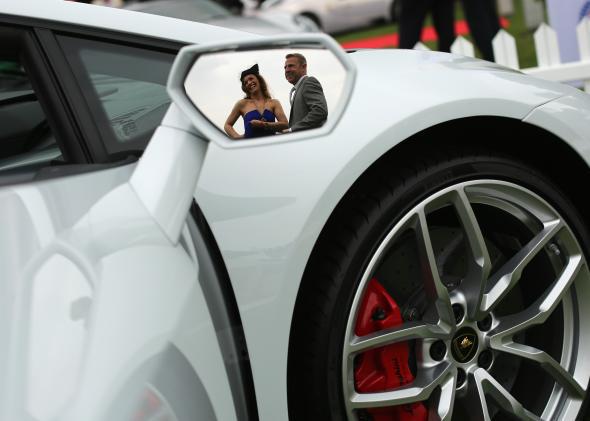This article originally appeared in Inc.
If you had to take a guess, what would you say were the top auto brands purchased by the wealthiest Americans? You’d probably guess Mercedes, BMW, Bentley … but according to the Martini Report, a study conducted by Ipsos MediaCT and Martini Media, you’re entirely wrong.
Among consumers that make more than $100,000 a year, the most widely owned car brands are Ford, Toyota, Honda, Chevy, and Nissan. Not only that, but they’re shopping at Amazon, Target, and Walmart.
“Of course they’re the main target for more upscale stores as well, but you can go to pretty much any outlet, any retail environment, and find often a majority of the dollars being spent by this minority of the population,” Ipsos chief insights officer Stephen Kraus said when he presented the Martini Report findings in New York City on Wednesday.
The objective of the report was to learn more about the wealthy so that brands can better target them in their advertising. It looked at four subcategories of the affluent consumer: The aspiring affluent are those above 40 years old who make $75,000 to $99,000. The emerging affluent who are between ages 18 to 39 making $75,000 to $99,000 a year. The mass affluent makes $100,000 to $249,000, and hyper affluent makes $250,000 or more.
One of the big takeaways from the study was that the rich are really just like us. They buy mainstream brands in addition to luxury brands, and at the end of the day, they’re looking for advertising that’s relevant and entertaining.
What differentiates them, however, is how much of the national spending they account for. The affluent make up 65 percent of all U.S. dollars spent on cruises, 60 percent spent on suits, 54 percent on hotels, 52 percent on airfares, 47 percent on online videos, and 42 percent on new cars.
It’s clear that brands should consider these statistics when figuring out their content and messaging strategies.
Another major finding from the Martini Report was that affluent consumers are hypertechnological. “They live technology-infused lifestyles,” Kraus said. “They think of their lives as completely intertwined with technology.”
Which in turn means that they’re increasingly spending that money online. Sixty-seventy percent of affluent consumers said they had made purchase on a computer in the past week.
According to Ipsos, 70 percent of people who make more than $100,000 a year visited Amazon in the past 30 days, averaging 3.4 purchases. About a third are also Amazon Prime members.
That same category is purchasing airline tickets, women’s apparel/accessories, hotel reservations, event tickets, and books on a computer. They’re buying music, apps, games, takeout/delivery, and event tickets on smartphones. And they’re buying books, apps, games, women’s apparel/accessories, and music on tablets.
As Kraus explained, affluent consumers are spending tons of money online and across a variety of retailers and brands, so it behooves the average marketer to consider this sector when crafting their strategies.
“Where do affluents shop?” Kraus asked. “They shop everywhere.”
See also: Why You Should Hire Employees With Typos on Their Résumés
